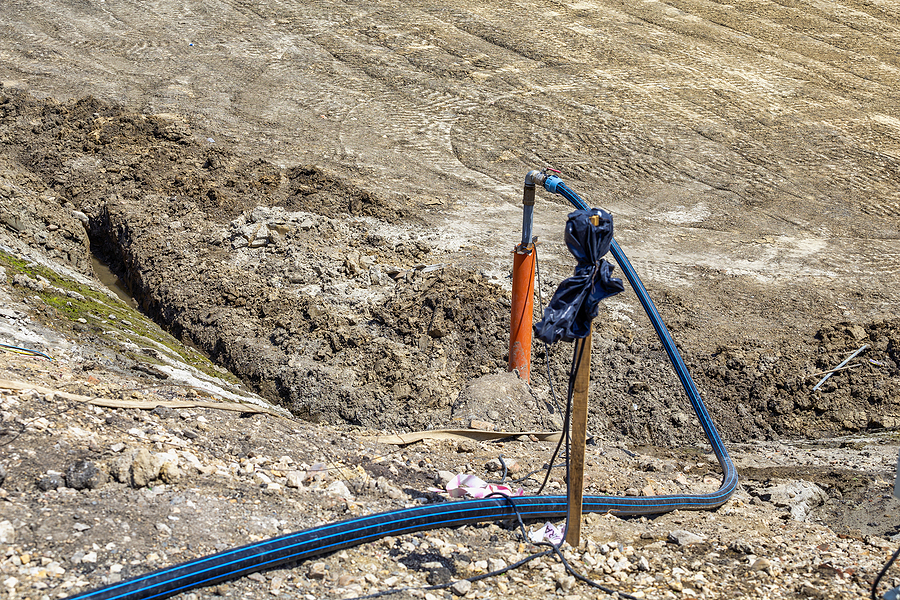In the world of construction and civil engineering projects, water management plays a critical role in ensuring the success and longevity of structures. Dewatering, the process of removing groundwater or surface water from a construction site, is vital to this management strategy. However, designing an effective dewatering system requires careful consideration of various factors to safeguard the project from potential risks and challenges.
To know more about dewatering design, you can reach out to civil engineering design companies who can provide expert guidance and assistance in devising modified solutions to meet specific project requirements and ensure seamless integration with construction plans. This article delves into the intricacies of dewatering design, exploring various methods, crucial considerations, and best practices to ensure a watertight (pun intended) approach to your next project.
Understanding the Importance of Dewatering Design:
Table of Contents
Imagine a bustling construction site. The foundation must be laid, but persistent groundwater threatens to flood the excavation. This can lead to a domino effect of delays, compromised structural integrity, and potential safety hazards.
An effective dewatering design tackles this issue head-on by:
Maintaining a dry and stable work environment: Dewatering allows for safe excavation and construction activities below the water table.
Ensuring foundation stability: By lowering the groundwater level, dewatering prevents hydrostatic pressure from compromising the foundation’s strength.
Optimizing construction timelines: A well-planned dewatering system minimizes delays caused by wet conditions, allowing construction to proceed smoothly.
Enhancing safety: Dewatering reduces the risk of slips, falls, and trench collapses often associated with saturated soil conditions.
Choosing the Right Dewatering Method:
The dewatering method best suited for your project depends on several factors, including site geology, excavation depth, and groundwater volume. Here’s a breakdown of some commonly employed methods:
Sumps and Pumps: This is a go-to solution for shallow excavations. Sumps are essentially collection pits dug at the lowest point of the excavation. Submersible pumps then remove the accumulated groundwater.
Wellpoint Systems: Wellpoints are essentially small-diameter wells driven into the ground around the excavation perimeter. They create a cone of depression, lowering the groundwater level within the enclosed area.
Shoring Systems: Sheet or soldier piles are physical barriers to prevent groundwater from entering the excavation. They are often used in conjunction with other dewatering methods for deeper excavations.
Drainage Trenches: Ditches dug around the excavation perimeter can effectively collect and divert groundwater away from the work area. This method is best suited for situations with a relatively low groundwater table.
Vacuum Excavation: This innovative technique utilizes high-powered vacuums to remove shallow groundwater and soil materials. It’s particularly well-suited for utility excavation and environmentally sensitive projects.
Selecting the optimal dewatering method requires careful consideration of these factors:
Site Characteristics: Soil type, permeability, and depth of groundwater table all play a role.
Project Requirements: The depth and size of the excavation will influence the dewatering strategy.
Budgetary Constraints: Different methods come with varying equipment, installation, and operation costs.
Environmental Regulations: Local regulations regarding water disposal and environmental protection must be factored in.
Key Considerations for Effective Dewatering Design:
Once you’ve chosen the appropriate dewatering method, meticulous design becomes paramount. Here are some crucial aspects to consider:
Precise Inflow Rate Estimation: Accurately predicting the volume of groundwater to be removed is essential. This forms the basis for selecting pump capacities and designing the overall dewatering system.
Treatment and Disposal of Discharged Water: The water removed from the excavation may require treatment before disposal to comply with environmental regulations. The design should incorporate filtration or sedimentation processes if necessary.
Monitoring and Contingency Plans: Continuous monitoring of the dewatering system’s performance is crucial. Having backup pumps and alternative dewatering methods in place ensures the project can handle unforeseen circumstances.
Optimizing Your Dewatering Design for Success:
While selecting the correct method and meticulous design are foundational, here are some additional tips to optimize your dewatering project:
Early Integration with Project Planning: Incorporating dewatering considerations early in the project planning phase allows for a more holistic and cost-effective approach.
Collaboration Between Contractor and Engineer: Open communication and collaboration between the contractor and engineer ensure a dewatering design that aligns with the project’s specific requirements.
Sustainability Considerations: Explore ways to minimize water usage and maximize water recycling during dewatering. This can involve using rainwater harvesting techniques or closed-loop dewatering systems.
Summing it Up:
In conclusion, effective dewatering design is indispensable for the success and integrity of construction projects. By carefully assessing site conditions, choosing appropriate techniques, integrating dewatering with construction planning, and prioritizing environmental stewardship, civil engineering design companies can tackle risks and optimize project outcomes. Continuous monitoring and maintenance further enhance system performance, ensuring long-term reliability. Investing in robust dewatering design upfront yields dividends in project efficiency, safety, and sustainability.
Image Source: BigStockPhoto.com (Licensed)
Related Categories: Home, Reviews








